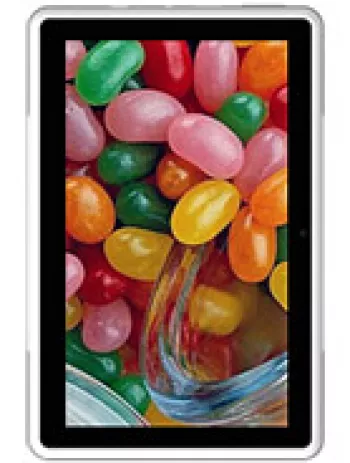
Overview
The Karbonn A9 is a smartphone that was announced in 2012, aiming to compete in the budget market. Designed with a focus on affordability and functionality, the A9 features a dual SIM option, a feature that was still gaining popularity at the time. Although it's now discontinued, the Karbonn A9 was a phone that contributed significantly to the accessibility of smartphones in developing markets. Below is a detailed exploration of its specifications and features.
Design and Display
The Karbonn A9 measures 120 x 60.5 x 11.3 mm and was constructed to offer a balance between portability and usability. The device comes with a 3.8-inch TFT display, providing a resolution of 480 x 800 pixels. The screen is capable of displaying 256K colors, and while it is not the largest display for a smartphone, it provides adequate clarity and vibrancy for everyday use. The screen-to-body ratio stands at 56.6%, which was a common feature for phones at the time.
Performance and Software
Under the hood, the Karbonn A9 is powered by a 1.0 GHz processor, which delivers basic performance sufficient for casual browsing and running common applications. While it cannot compete with modern octa-core processors, it was capable enough for its time. The phone runs on Android 2.3.6 (Gingerbread), an operating system that, during its release, was known for its user-friendly interface and extensive app support. However, being an older version of Android, it lacks in supporting newer applications available today.
Memory and Storage
The device comes with 512MB of internal storage, which is modest by today's standards. However, it does include a microSDHC slot, allowing users to expand the storage further. This was particularly beneficial for those who desired to store more music, photos, and applications beyond the limitations of the internal storage.
Camera Capabilities
The Karbonn A9 is equipped with a 5 MP autofocus camera, accompanied by an LED flash. This basic setup allowed for decent photography under good lighting conditions. Though it lacks the sophistication of modern smartphone cameras, which offer multiple lenses and better low-light performance, it was sufficient for capturing everyday moments. The phone also includes a secondary camera, which, although basic, adds a level of versatility.
Battery Life
One of the practical aspects of the Karbonn A9 is its removable 1600 mAh Li-Ion battery. It provides up to 200 hours of standby time and up to 4 hours of talk time, catering adequately to the needs of users who required a basic level of phone functionality without heavily relying on intensive applications or gaming.
Connectivity and Networking
The device supports GSM/HSPA technologies, with 2G and 3G band support which was standard at the time. It includes Wi-Fi 802.11 b/g/n for wireless connectivity, Bluetooth 2.1 with A2DP for connecting to headsets or other devices, and GPS for location services. However, the lack of NFC limits certain connectivity features available in more modern devices. The A9 also includes an FM radio, providing users with entertainment options without relying on internet connectivity.
Additional Features
Among the features of the Karbonn A9 are sensors like the accelerometer and proximity sensor. These contribute to the functionality of apps and usability of the phone. The inclusion of a 3.5mm headphone jack ensures compatibility with a wide range of audio devices, a feature appreciated by many users. Moreover, its dual SIM capability allows users to manage multiple phone numbers, which is particularly advantageous for separating personal and work contacts.
Market Position and Pricing
Priced initially at about 110 EUR, the Karbonn A9 was positioned as an affordable smartphone option targeting users in emerging markets. It aimed to provide essential smartphone functions without the high cost, making such technology accessible to a wider audience. Its discontinuation reflects both the natural progression of technology and the evolution of consumer demands towards more advanced features.
Conclusion
In retrospect, the Karbonn A9 represents a significant period in smartphone development, where affordability met function, expanding mobile communication's reach. Despite its limitations compared to today's standards, it played its part in the democratization of smartphone technology. For many users during its time, it provided an introduction to smartphones at a price that was accessible and affordable.
Main Features of Karbonn A9
- Dual SIM capability allowing the use of two numbers.
- 3.8 inch TFT display with 256K colors, offering a resolution of 480 x 800 pixels.
- Powered by a 1.0 GHz processor for moderate performance.
- Expandable storage through a microSDHC card slot.
- 5 MP main camera with autofocus and LED flash.
- Basic front camera for video calls.
- Supports Wi-Fi, Bluetooth, and GPS connectivity.
- Comes with a 1600 mAh removable battery.
- Includes sensors like accelerometer and proximity sensor.
- FM radio support for listening to music and news.
- Available in Black and White colors.
Karbonn A9 Drawbacks
- Outdated Operating System: Runs on Android 2.3.6 (Gingerbread), which is no longer supported.
- Limited Internal Storage: Offers only 512MB internal memory.
- Low Battery Life: Li-Ion 1600 mAh battery with up to 4 hours of talk time.
- Display Limitations: TFT display with only 256K colors and 480 x 800 resolution.
- No NFC support.
- Discontinued Status: The device is no longer in production.
- Basic Selfie Camera with unspecified video capabilities.

View Also
More Phones
All Rights Reserved +14268 Phones © Mobilawy 2025

























